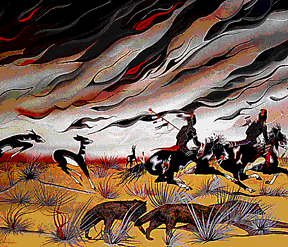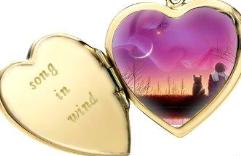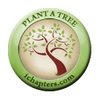
The Great Plains (sometimes called the American prairies) fills the very center of the North American continent, stretching some 1,500 miles north to south (from the north central regions of Texas to the southern prairies of Canada) &more than 1,000 miles east to west (from the Mississippi-Missouri Valley to the Rocky Mountains). And while the Plains landscape appears to many to be a vast unbroken treeless &uniform grassland, it is in fact broken by ranges of hills &wooded river valleys, and consists of two subregions, the more humid eastern plains with tall-grass prairies &the drier western plains or steppe, where short-grass prairies dominate.
The valleys and hills were home to deer, elk, bear, antelope, and beaver, while in the mountains at the western edge lived mountain sheep. In the rivers were fish, and waterfowl were seasonally abundant during their annual migrations. But it was the bison who were the principal inhabitants of the grasslands. Up until the middle of the 19th century, more than 60 million of them lived in the region.
They provided the plains people (both the nomads &the cultivators) with meat for eating, fat for cooking, hides for house-covers &winter coats, bones &horns for a variety of tools, stomachs were made into carrying &sometimes cooking devices, even the tails found a use - as fly swatters.
Historical Overview
Before the Europeans
My heart is filled with joy when I see you here, as the brooks fill with water when the snows melt in the spring; and I feel glad, as the ponies do when the fresh grass starts in the beginning of the year. My people have never first drawn a bow or gun against whites. There has been trouble on the line between us, and my young men have danced the war dance. But it was not begun by us. It was you who sent out the first soldier and we who sent out the second. The blue dressed soldiers and the Utes came out from the night when it was dark and still, and for camp fires they lit our lodges. Instead of hunting game, they killed my braves, and the warriors of the tribe cut their hair for the dead. So it was in Texas.
They made sorrow come in our camps, and we went out like the buffalo bulls when the cows are attacked. When we found them we killed them and their scalps hang in our lodges. The Comanches are not weak and blind, like pups or a dog when seven sleeps old. they are strong and farsighted, like grown horses. We took their road and we went on it. The white women cried and our women laughed. But there are things which you have said which I do not like. They are not sweet like sugar, but bitter like gourds. You said that you wanted to put us upon a reservation, to build us houses and make us medicine lodges.
I do not want them. I was born upon the prairie, where the wind blew free and there was nothing to break the light of the sun. I lived like my fathers before me, and like them I lived happily.Spoken by the great Yamparikas Comanche Paruasemena (Young Bear) at the 1867 Medicine Lodge Treaty.
COMANCHE, CHEYENNE, and SIOUX - names well-known to millions of fans of westerns (books, TV programs, movies). And for many non-Indians, it was the life-style of these &other Plains people that represents the very concept of "Indianness": nomadic, tepee-dwelling, horse-mounted buffalo hunters; warriors wearing eagle-feathered warbonnets &wielding lance &shield while attacking their enemies; young men subjecting themselves to days and days of isolation &starvation in search of a vision. While such features did exist among some Plains nations, neither were they universal nor, in the case of hunting buffalo from horseback, were they of any great time depth. It wasn't until the 17th century, following the arrival of the European-introduced horse to the Great Plains, that the "stereotypical" Plains culture of books, movies, &TV emerged &people began to live across the Plains. Before that, the area was nearly empty of human life, with two exceptions:
Along the river bottoms of the Mississippi-Missouri river drainage system in the eastern &middle plains lived sedentary village dwelling farmers (such as the Hidatsa, Mandan, Omaha, Kansa, Missouri, &others)
Scattered in various other plains locations lived foot nomads, such as the ancestors of the modern Blackfoot, Comanche, Kiowa, and various Shoshonean speaking nations.
Other Plains hunters, such as the Cheyenne, Arapaho, Crow, &Dakota were latecomers to the Plains, abandoning their settled agricultural way of life for one of nomadic buffalo hunting and, as was the case on the southern Plains dwellers, raiding the towns of the native peoples of the Southwestern Culture Area.
But long before that, the Great Plains region was home to some of the earliest settlers in North America. Archaeological evidence for the first use of the Plains dates to about 12,000 years ago when the Clovis people, broad-spectrum big game hunters of the Paleo-Indian tradition, moved onto the Plains seeking a variety of large game. They hunted gigantic mammoths, a relative of the elephant, and other large game such as the ground sloth, musk-ox, reindeer, elk, brown bear and primitive horses.
By about 9000-8500 B.C., the broad-spectrum big-game hunters had begun to focus on a single animal species, the bison (an early cousin of the buffalo). The eariest known of these bison oriented traditions is Folsom. Folsom people moved around in small family groups for most of the year, returning yearly to the same springs &other favored locations on higher ground. There they would camp for a few days, perhaps erecting a temporary shelter, making &/or repairing some stone tools, or processing some meat, then moving on.
After 8000 B.C., hunter-gatherers on the Great Plains were not numerous &population densities were quite low. Although some Paleo-Indians continued as open plains bison hunters, hunting traditions became more varied and bison procurement methods more sophisticated. Additionally, some groups took to supplementing bison meat with other food resources (antelope, deer, bearn, small mammals, fish, &seasonally available wild vegetable foods).
Between about 5500 B.C. &0 B.C./A.D., regional adaptations became the norm with relying less on bison &more on a mixed economy of small game &gathered plant foods. In the western plains, groups moved toward the mountain valleys &shifted from nomadic hunting &gathering to more fixed base hunting, while the eastern groups turned to a mixed economy with far more dependence on vegetal foods &small game (deer, rabbits).
Between 1000 B.C. - 1000 A.D. a lifestyle emerged on the edges of the eastern Plains which set the stage for the sedentary horticulturalist tradition which existed at the time of European contact. Farmers from the Eastern Woodlands culture area began moving westward up the valleys of Mississippi tributaries, penetrating the Plains between 250 B.C. &950 A.D, &bringing with them features new to the Plains:
cultivation of indigenous plants (such as sunflower, goosefoot, pigweed, &others) as well as maize &beans (originally introduced to the Eastern Woodlands from Mexico)
burial of the dead in or under earthen mounds
the manufacture of pottery
The first Plains farming communities may have been inspired by &perhaps dervied from Hopewellian cultures,were up to 3-4 hectares in size, and participated in Hopewell trade networks, perhaps supplying Ohio Hopewellian communities with obsidian from Yellowstone Park &high-quality chalcedony from western North Dakota. The subsistence system included the cultivation of several species of indigenous plants, perhaps along with primitive strains of maize. In the northeastern Plains earthen mounds were built, including linear earthworks and conical burial mounds.
Often the burial mounds covered log-covered pits containing human burials, often along with bison skeletons &/or skulls, a decidedly Plains addition to typical Hopewellian burial mound patterns. Some anthropologists have suggested that these northeastern Plains mound-builders were ancestral to the historically known Dakota, Assiniboin, &Cheyenne people. It was also during this period that the bow &arrow, an Athapascan Subarctic Culture Area weapon, was introduced on the Plains.
The period between 1000 - 1850 A.D. witnessed the introduction of multi-family houses (semi-subterranean earth lodges) grouped into fixed villages. This new wave of eastern influence &colonies had its origins in Mississippian developments. Over time, the smaller villages of earlier times were abandoned in favor of fewer but larger, more consolidated &permanent settlements, usually equipped with numerous underground storage pits. Some of these new communities were fortified for defense purposes with ditches &stockades.
Farming was restricted to the alluvial bottomlands of larger rivers and although these new agricultural villagers continued to grow various local plant species, the subsistence system was improved with the introduction of advanced strains of maize &beans (possibly intrduced from Mexico). When the first European fur trappers &traders moved up the Mississippi-Missouri river system, they found flourishing farming nations with rich &elaborate cultural traditions. These nations were the direct ancestors of modern Plains people - the Mandan, Hidatsa, Arikara, Pawnee, Wichita, Omaha, Oto, Ponca, &Kansa.
http://www.cabrillo.edu/~crsmith/noamer_plains.html




























